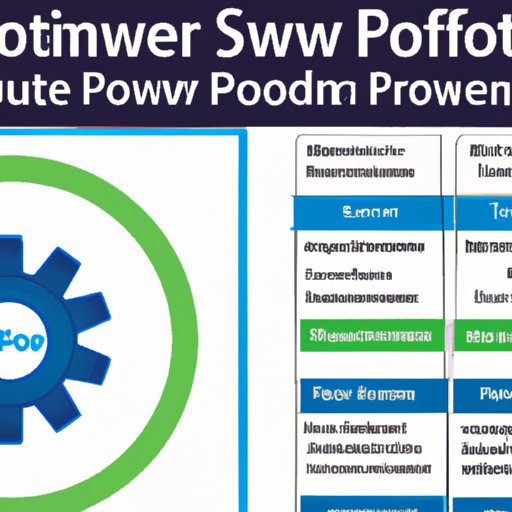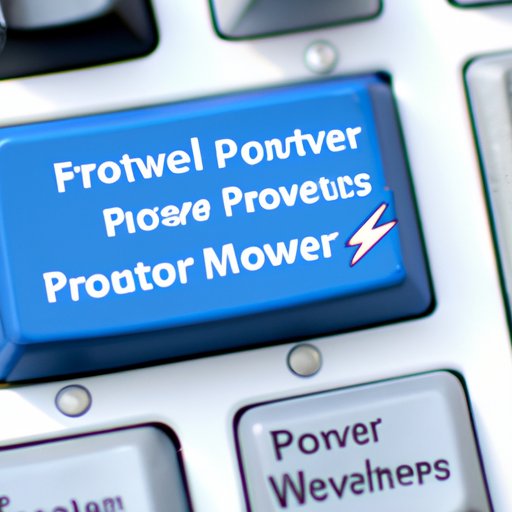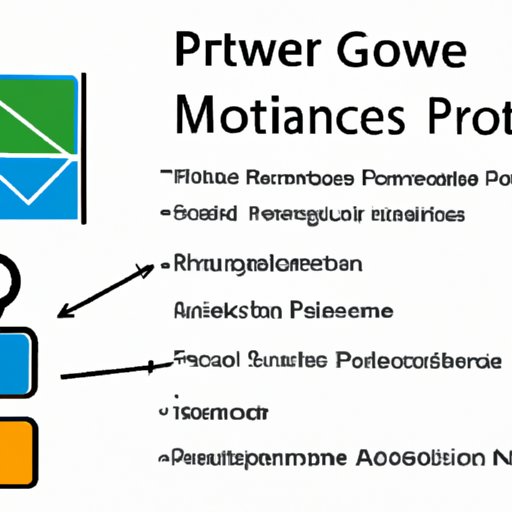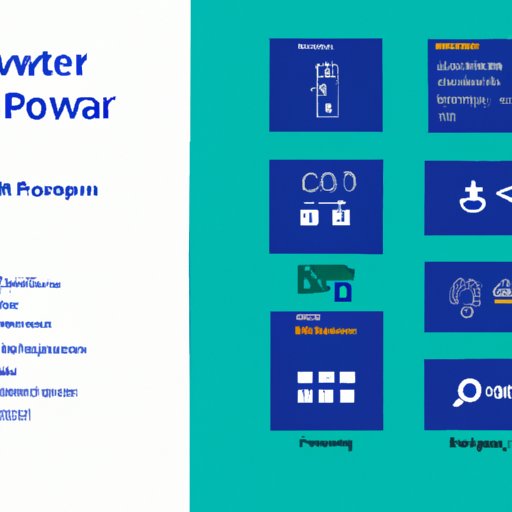Introduction
Microsoft Power Automate is a powerful automation platform that allows businesses to automate manual tasks, optimize existing workflows, and streamline processes across multiple systems. With its intuitive drag-and-drop interface, users can quickly create automated workflows that are triggered by specific events or conditions. In this guide, we’ll explore the fundamentals of Microsoft Power Automate, demonstrate how to create automated workflows, and discuss best practices for developing automations.

Overview of Microsoft Power Automate
Microsoft Power Automate is a cloud-based automation platform that helps organizations streamline their workflows and eliminate manual processes. It enables users to create automated workflows using a drag-and-drop interface. These workflows can be triggered by specific events or data changes, and can execute a wide range of tasks such as sending emails, creating records in other systems, and posting messages to teams. By leveraging the power of Power Automate, businesses can save time, reduce costs, and improve efficiency.

Benefits of Using Microsoft Power Automate
Microsoft Power Automate provides a number of benefits to businesses, including:
- Time savings: Automating manual tasks and processes can save time and free up employees to focus on more important tasks. According to a survey conducted by IDC, automation can help businesses reduce the time needed to complete tasks by up to 80%.
- Cost savings: Automation can also help businesses reduce costs by eliminating the need for manual labor. By automating processes, businesses can save money on labor costs and improve efficiency.
- Increased accuracy: Automating tasks and processes can help reduce errors and improve accuracy. Automated workflows are less prone to human error, which can result in fewer mistakes and improved data integrity.
- Improved customer service: Automation can help businesses provide better customer service by responding quickly to customer inquiries and providing timely updates. Automated workflows can also help businesses stay organized and ensure that customers receive the information they need in a timely manner.
Step-by-Step Guide to Automating Tasks with Microsoft Power Automate
Creating automated workflows with Microsoft Power Automate is easy, thanks to its straightforward user interface. Here’s a step-by-step guide to setting up and managing your flows:
Setting up a Flow
The first step in creating an automated workflow is setting up a flow. To do this, log into your Microsoft Power Automate account and click the “Create a Flow” button. You will then be prompted to choose a template or start from scratch. If you choose to start from scratch, you will be taken to the flow designer. Here, you can configure the trigger, define the conditions, and add the actions.
Creating an Automated Workflow
Once you have configured the trigger and conditions, you can begin adding the actions. The actions define what will happen when the trigger is activated. For example, you could set up an action to send an email or post a message to Teams whenever a new item is added to a SharePoint list. When you’re finished, click the “Save” button to save the flow.
Managing Your Flows
Once you have created your flows, you can manage them from the Manage page. This page allows you to view all of your flows, edit them, disable them, or delete them. You can also use the Manage page to view the status of your flows, view the history of each flow, and view any errors that may have occurred.
How to Create Automated Workflows Using Microsoft Power Automate
Creating automated workflows with Microsoft Power Automate requires some planning and preparation. Here’s a step-by-step guide to creating automated workflows:
Defining the Business Process
The first step in creating an automated workflow is to define the business process. This involves identifying the steps involved in the process and defining the inputs, outputs, and conditions. Once the business process has been defined, it will be easier to create the automated workflow.
Understanding Triggers and Actions
The next step is to understand triggers and actions. Triggers define the events that will cause the workflow to run, while actions define the tasks that will be performed when the triggers are activated. For example, a trigger could be “when a new item is added to a SharePoint list”, and the action could be “send an email”.
Building the Workflow
Once you have defined the business process and understood the triggers and actions, you can begin building the workflow. To do this, you will use the flow designer to configure the trigger, define the conditions, and add the actions. Once you have finished configuring the flow, click the “Save” button to save the flow.
Leveraging Microsoft Power Automate for Business Process Automation
Microsoft Power Automate can be used to automate a wide range of business processes, from simple tasks to complex workflows. Here are some of the ways that businesses can leverage Power Automate to automate their processes:
Automating Common Processes
Power Automate can be used to automate common processes such as product approvals, customer onboarding, and order fulfillment. Automating these processes can help businesses save time and reduce errors.
Automating Complex Processes
Power Automate can also be used to automate more complex processes such as financial reporting, compliance management, and marketing campaigns. Automating these processes can help businesses reduce costs and improve efficiency.
Optimizing Existing Processes
Power Automate can also be used to optimize existing processes. For example, businesses can use Power Automate to identify bottlenecks in their processes and implement solutions to improve efficiency. In addition, businesses can use Power Automate to monitor their processes and identify opportunities for improvement.
6 Useful Triggers and Actions in Microsoft Power Automate
Microsoft Power Automate includes a wide range of triggers and actions that can be used to create automated workflows. Here are six of the most useful triggers and actions:
Trigger: When a File is Created or Modified
This trigger fires whenever a file is created or modified in a specified location. This can be used to automate tasks such as sending an email when a new file is uploaded to a shared folder.
Action: Send an Email
This action sends an email to a specified recipient. This can be used to automate tasks such as sending out notifications or reminders.
Trigger: When a New Item is Added to a SharePoint List
This trigger fires whenever a new item is added to a specified SharePoint list. This can be used to automate tasks such as sending an email when a new item is added to a list.
Action: Create an Item in Another System
This action creates a new item in another system. This can be used to automate tasks such as creating a record in an external database or application.
Trigger: When a Record is Added to a Dynamics 365 Table
This trigger fires whenever a new record is added to a specified Dynamics 365 table. This can be used to automate tasks such as sending an email when a new record is added.
Action: Post a Message to Teams
This action posts a message to a specified Microsoft Teams channel. This can be used to automate tasks such as sending out notifications or status updates.

Integrating Microsoft Power Automate with External Services
Microsoft Power Automate can be integrated with external services such as APIs and third-party applications. This allows businesses to connect their systems and synchronize data between them. Here’s a look at how to integrate Power Automate with external services:
Connecting to External APIs
Microsoft Power Automate can be used to connect to external APIs. This allows businesses to access data from external sources and integrate it into their workflows. For example, businesses can use Power Automate to connect to a weather API and retrieve the current temperature for their location.
Connecting to Third-Party Applications
Microsoft Power Automate can also be used to connect to third-party applications. This allows businesses to access data from external applications and integrate it into their workflows. For example, businesses can use Power Automate to connect to a CRM application and retrieve customer data.
Synchronizing Data Between Systems
Microsoft Power Automate can be used to synchronize data between systems. This allows businesses to keep their data up-to-date across multiple systems. For example, businesses can use Power Automate to synchronize customer data between their CRM and ERP systems.

Best Practices for Developing Automations with Microsoft Power Automate
Developing automations with Microsoft Power Automate requires some planning and preparation. Here are some best practices for developing automations with Power Automate:
Define Clear Goals
Before beginning the development process, it’s important to define clear goals for the automation. This will help ensure that the automation meets the desired objectives and is developed in the most efficient way possible.
Test and Monitor Automations
Once the automation has been developed, it’s important to test the automation and monitor it for any errors or issues. Testing and monitoring can help ensure that the automation runs smoothly and without any problems.
Set Up Error Handling
It’s also important to set up error handling for the automation. This will help ensure that any errors that occur during the automation are handled properly and that the workflow continues to run smoothly.
Conclusion
Microsoft Power Automate is a powerful tool for automating tasks and optimizing business processes. From simple tasks to complex workflows, Power Automate can help businesses save time, reduce costs, and improve efficiency. By following the steps outlined in this guide, businesses can easily create automated workflows and leverage the power of Power Automate.
Summary
In summary, Microsoft Power Automate is a powerful automation platform that can be used to automate tasks, optimize existing workflows, and streamline processes across multiple systems. With its intuitive drag-and-drop interface, users can quickly create automated workflows that are triggered by specific events or conditions. By leveraging the power of Power Automate, businesses can save time, reduce costs, and improve efficiency.
Further Reading
For more information on Microsoft Power Automate, check out our blog post on Getting Started with Microsoft Power Automate.
(Note: Is this article not meeting your expectations? Do you have knowledge or insights to share? Unlock new opportunities and expand your reach by joining our authors team. Click Registration to join us and share your expertise with our readers.)
